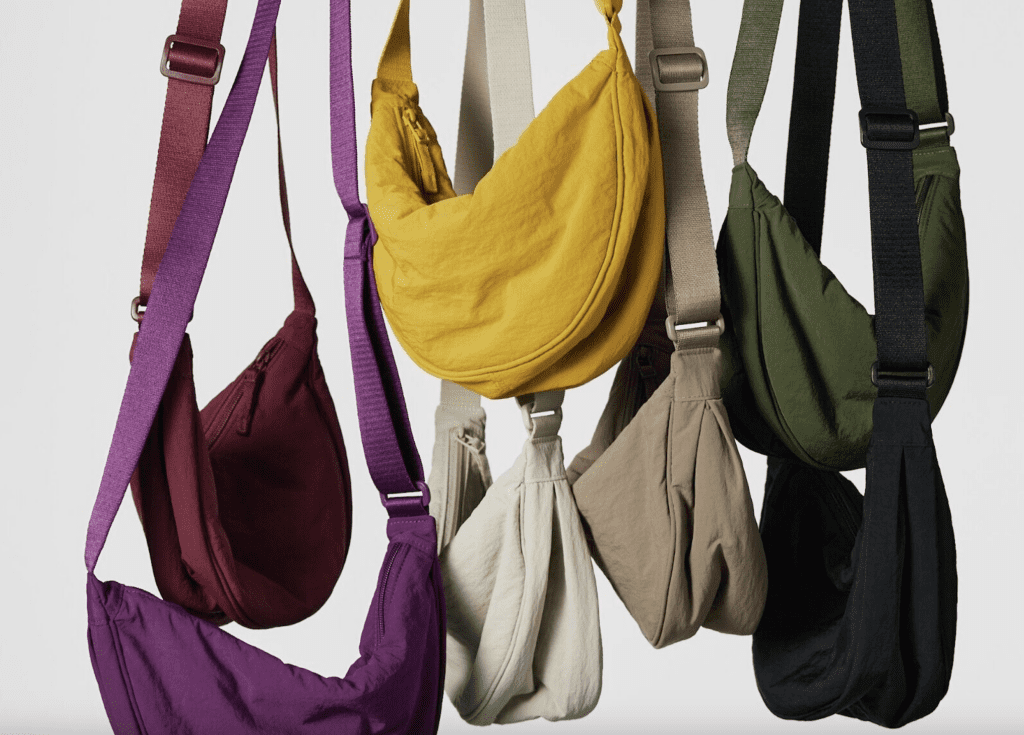Few brands’ products are off limits when it comes to copying in the era of ultra-fast fashion. The purveyors of fast fashion have traditionally targeted high fashion/luxury garments and accessories, plucking standout pieces from runway collections and making accessibly priced versions of them available to the masses. However, the new wave of fast fashion retailers is readily changing the game, with the likes of Shein, Temu, and co. looking beyond the runway to fellow mass-market companies’ wares and the offerings of lesser-known indie designers for “inspiration.” Uniqlo’s recently initiated case against Shein over the latter’s alleged infringement of its $20 Mini Round bag and a copyright case waged by H&M against Shein are perfect examples of the shift that is underway.
According to the complaint that Uniqlo lodged with the Tokyo District Court last month, a trio of Shein-owned entities have co-opted the design of its Round Mini Shoulder bag, thereby, engaging in unfair competition and “significantly undermin[ing] the high level of customer confidence in the quality of the UNIQLO brand and its products.” Regardless of the merit of – or lack thereof – Uniqlo’s infringement claims against Shein, the case is a noteworthy one, as it is a direct nod to the enduring change that is underway among fast fashion players.
(Not an entirely novel phenomenon, cases waged by indie designers against the likes of Shein and Temu, and Forever 21, Zara, and H&M, among others, before that also indicate that fast fashion brands have not exclusively preyed upon high fashion brands’ offerings but have also looked to sources beyond the runway for design ideas to knockoff.)
The practice of fast fashion companies copying their most immediate competitors – and/or other mass market companies – is relatively noteworthy for a couple of reasons. First, it is an eye-opening exercise from a pricing perspective. In the Uniqlo v. Shein case, for instance, the products at play are not expensive ones. Unlike a Zara copy of a Celine cardigan, where the price differential of those wares is $50 versus $3,000-plus, the difference in price is far less striking in the fast fashion vs. fast fashion realm. Uniqlo’s Mini Round bag retails for $19.90 in the U.S., whereas one of Shein’s alleged copies was selling for less than $5. The play here from a pricing perspective seems to be firmly rooted in a race to the bottom.
Second, the rise in fast fashion vs. fast fashion copying is (more) interesting due to what is driving this phenomenon: this scenario likely stems from the fact that at least some of these newer fast fashion entities are almost entirely data driven. A lawsuit waged against Shein last year is illustrative on this front. You may recall that a trio of indie designers filed suit against Shein in July, accusing the China-founded, Singapore-based giant of not only carrying out “large-scale and systematic intellectual property theft from U.S. designers large and small,” but also of engaging in infringement-related racketeering activities in the process.
The critical aspect of this case (for our current purposes) comes by way of allegations about fast fashion and artificial intelligence (“AI”). The plaintiffs allege that Shein does not operate in the same way that fast fashion companies used to by scouring the web for inspiration (or hiring trend forecasting companies to do so), determining what were likely to be the hottest runway looks during any given season, and then sourcing copies of those items from suppliers (or manufacturing them in-house, as Zara frequently does). Instead, the plaintiffs claim that Shein utilizes an AI-powered “design algorithm” that does most – if not all of – that work for it.
According to the complaint in that ongoing case, Shein’s algorithm is allegedly “smart enough to [identify and] misappropriate the pieces with the greatest commercial potential.” Specifically, the plaintiffs contend that the ultra-fast fashion titan’s AI-powered algorithm has “handily bested every human attempt” to consistently identify and design desirable clothing and accessories items, noting that the brand “has made billions [of dollars] by creating a secretive algorithm that astonishingly determines” – and then “spits out” – “nascent fashion trends … offering a rapidly changing assortment of [hundreds of] trendy and remarkably affordable clothing, shoes, accessories, and beauty products.”
The plaintiffs further maintain that although the “details and precise methods” behind Shein’s algorithm are closely-protected secrets, it is “possible to infer certain facts about Shein’s algorithm by looking at its results.” For example, they argue that it is “impossible not to notice that Shein’s process often generates products that are exact copies of the work of other designers: occasionally large ones, but more often than not independent leading designers, such as the plaintiffs.”
In other words, Shein’s algorithm seems to be indifferent to the brand and price points at play and instead, likely identifies “it” designs based on different factors, such as page views, social media mentions/interactions, etc. This is potentially how knockoffs of Uniqlo’s inexpensive Mini Round bag, for example, end up alongside “dupes” of more expensive but similarly sought-after items like Cartier Tank watches, Margiela’s Tabi Mary Janes, Hermès’s Chypre sandals, Balenciaga’s Hourglass bags, Marc Jacobs’ viral Tote Bag, etc.
This also seems to suggest that any moats enjoyed by hot-selling – but inexpensive – products that may have previously been relatively safe from copycats are swiftly evaporating.














